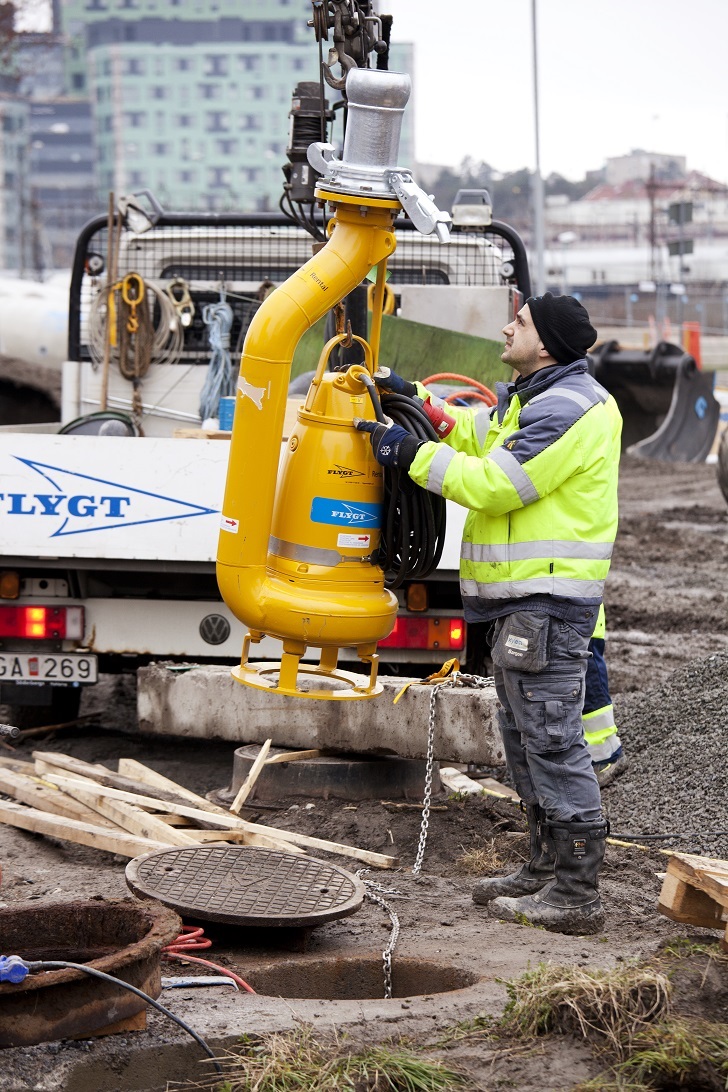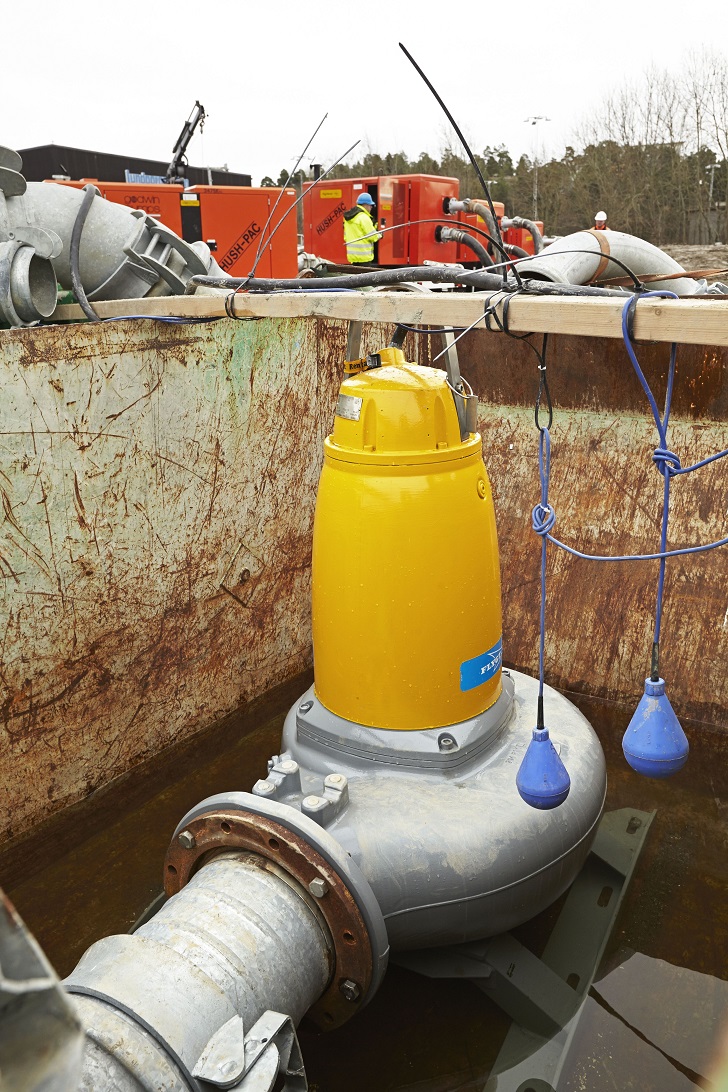

Sanitation networks are under increased pressure and instances of sewer system failures are on the rise. This article explains why proper maintenance and operation of municipal sewer systems are essential to ensuring the network remains effective and efficient.
infrastructure mean that sanitation networks are coming under increased pressure and instances of sewer system failures are on the rise. The proper maintenance and operation of municipal sewer systems is essential to ensuring the network remains effective and efficient, as stresses along the pipeline may cause malfunctions which are harmful to the environment, causing public health risks.
Most sanitary sewer systems consist of a network of pipes and pump stations which transport sewage from urban areas to a central wastewater treatment plant. When these sewer systems need to undergo maintenance, the flow of sewage cannot simply be diverted.
Often, complex bypass operations are required to transfer the wastewater to another part of the system while repairs to the main pipe line are carried out. Such rehabilitation projects are risky, and a lack of planning can compromise the already vulnerable system and expose the surrounding environment to sewage spills.
Essential steps There are several essential steps to properly quote, set up and operate a sewer bypass successfully, and many factors should be considered to ensure the reliability of the sewer system before ground is broken on the project. With the right approach, full service of the sewer system can be maintained during rehabilitation works, reducing the risk of scheduling delays and minimising potential threats to the surrounding environment.
Pumps are a critical part of any bypass operation. Usually a bypass project will require multiple pumps, working in tandem, to add up to the total m3/hour (cubic metres per hour) capacity required by the project. Many municipalities also require backup pumping systems with a capacity to handle 100% of the anticipated peak flow rate.
Backup systems are essential in any bypass operation as they protect against instances of unexpected high flows or primary system failure during pipe rehabilitation. The combination of reliable primary pumps, supported by a robust backup system, offers peace of mind as service is guaranteed to be maintained during loss of power, whether from a scheduled outage or a natural disaster.
Pump types Most bypass work is accomplished using centrifugal or self-priming submersible pumps. With a centrifugal pump, fluid enters the pump impeller along or near to the rotating axis and is accelerated by the impeller, flowing radially outward into a diffuser or volute chamber, from where it exits. When centrifugal pumps are used in parallel, the rotating impellers increase the pressure of the fluid, achieving a greater level of flow.
If a series of centrifugal pumps are used, the pumps work in tandem to achieve greater head pressure. When determining how many pumps, it is important to pre-determine the desired flow (peak capacity) to ensure enough pumps are installed to best support the project. Centrifugal pumps are often used for bypasses because they can handle large amounts of liquids and solids and have air-handling capabilities.
Ascertain peak flow To determine the most efficient bypass pump it is important to consider the maximum anticipated flow the bypass is expected to support during sewer rehabilitation works. Peak flow is the highest flow on the pipeline throughout the day and usually occurs in the early morning or late afternoon. Depending on the time of year, real-world peak flow can differ from specified peak flow due to external events, such as when large crowds gather, or excess water infiltration occurs due to adverse weather.
If the anticipated peak flow is incorrectly determined, the temporary bypass will not be able to sustain the sewer system during rehabilitation and risks of contamination to the surrounding environment are significantly increased as the possibility of a sewage spill becomes more likely. Determining the accurate peak flow is essential as once started, some bypasses are very complex to re-route.
In addition, it is also important to understand the various types of wastewater typically carried by the sewer system. Municipal wastewater can contain solid objects and other non-fibrous materials which can become caught in the pump’s impeller and clog the entire bypass system. The more solids a pump must handle, the stronger it has to be, making it important to determine the type of effluent when choosing a pump to support the bypass operation.
Depth check The depth of the sewer pipeline and sewage level within the pipeline must be also determined to properly select the right pump. One of the biggest limitations of centrifugal pumps in a bypass operation is the static suction lift – the vertical distance in feet from the eye of the impeller to the fluid level.
Centrifugal force creates a vacuum of pressure which throws the discharge out of the pump. Under a perfect vacuum, a centrifugal pump can lift no more than 8 m. However, other factors, like the need for pump efficiency, limit centrifugal pumps to a ‘practical lift’ of approximately 7 m.
If a sewer line is deeper than 7 m, electric motor-driven submersible pumps make for a more appropriate fit as they are not limited by a suction lift and can ‘push’ water up. In this instance, a submersible pump is lowered into the sewer pipeline and connected to the temporary discharge pipeline.
Suction loss Centrifugal pumps lose effective suction power at this depth and for this reason, more shallow bypass operations should use above the ground non-clog pumps. In this instance, a suction pipe rather than the pump itself is lowered into the sewer pipeline, leaving the pump above ground, and the pumps are again connected to the temporary bypass pipeline.
Understanding the worksite layout can help avoid complications during the installation process of a temporary bypass solution. For example, if the discharge point is more than 300 m from the pump site, additional pumping capacity may be required to reduce pressure or friction loss.
Furthermore, the site location can also determine whether diesel or electric pumps are used. In an urban setting electrical pumps ar e often the more economical option, but diesel pumps are ideal in remote areas where electrical power may be unreliable.
Minimise public disruptions With pumps, piping, construction equipment, and personnel, a bypass project can cause major disruption to local surroundings. Municipal sewer bypasses usually occur in urban centres or in areas where there is lots of activity, which can often result in access issues leading to limitations in safely transporting the necessary equipment required for installation. Other issues such as noise ordinances, traffic diversions and possible wildlife habitats must also be considered.
In instances where the discharge point is a great distance from the pump site, additional disruptions may be caused as the suction pipe is routed between the pump to the discharge point. Furthermore, additional construction work may need to be carried out to bury the suction pipe underground to allow for continued use of surrounding roads and local facilities.
Proper planning It is essential that proper planning is undertaken to ensure the bypass application is installed quickly and efficiently, and that proper consideration is given to ensure that public disruptions are minimised for the duration of the project.
While thorough planning is a major factor in the success of any sewer bypass operation, precautionary steps should also be taken in case something does go wrong. All municipal sewer bypass plans should contain a robust contingency plan that can be executed in case of an emergency. As bypass operations are risky by nature, the possibility of a sewage spill is always present.
A comprehensive sewage spill response plan will help safeguard the local environment from contamination and minimize or even prevent costly clean-up operations as a result. Successful sewer projects require the complete reliability of equipment and the people who operate it.




